Hydrangea quercifolia
You may already know of those fabulously puffy and fluffy hydrangeas, bursting with blue and purple blooms.
But do you know about their less showy, yet just as charming sister, the oakleaf hydrangea?
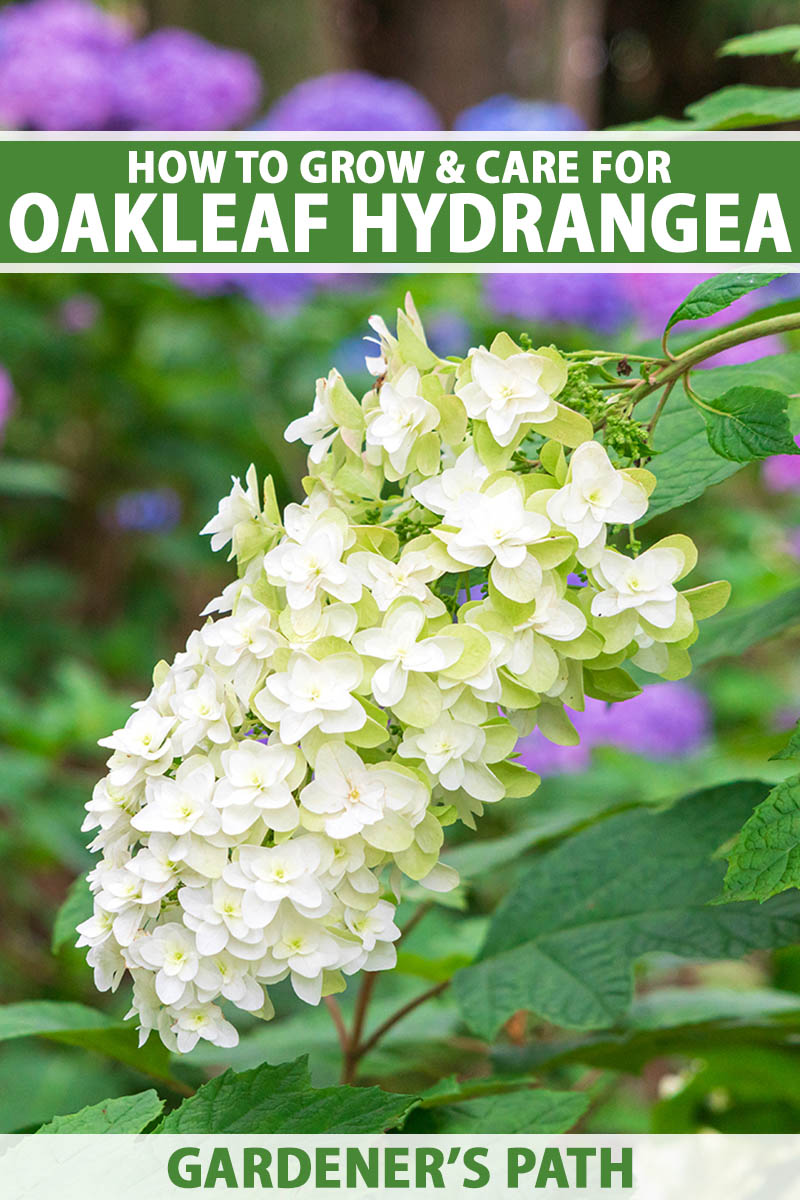
We link to vendors to help you find relevant products. If you buy from one of our links, we may earn a commission.
Lemme tell ya, folks – Hydrangea quercifolia is the perfect plant for those who’ve stood in front of an oak tree, taken in its massive majesty and splendor, and thought to themselves, “I wish this was more like a shrub, and with prettier flowers.”
Okay, maybe the leaves aren’t exactly alike… but it’s pretty dang close, if you ask me.
And when you add exfoliating bark and beautiful blooms to the mix, you’ve got yourself a shrub that arguably gives the entire Quercus genus a run for its money, aesthetics-wise.
In this guide, we’ll go over everything you need to know for proper oakleaf hydrangea cultivation, and more.
By its end, you’ll understand why this plant is one of our favorite shrubs for adding seasonal interest and simple elegance to the garden.
Here’s the itinerary:
What You’ll Learn
What Are Oakleaf Hydrangeas?
Known botanically as Hydrangea quercifolia, the oakleaf hydrangea is a flowering deciduous woody shrub that’s native to the southeastern region of the United States.
It’s often found growing in ravines, on bluffs, in moist woodlands, and along stream banks.
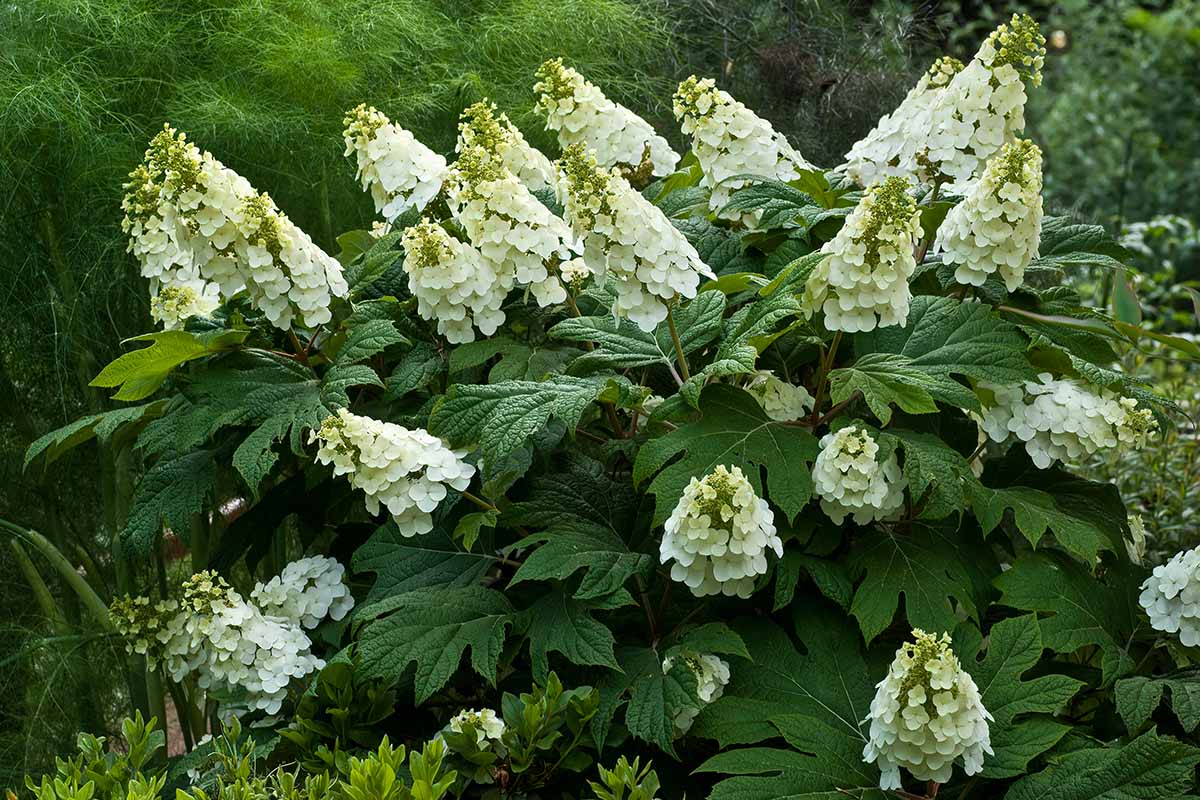
With a hardiness range of USDA Zones 5 to 9, the plant can reach heights of four to 10 feet, with an approximately equal spread.
Right off the bat, you’ll notice that the oakleaf hydrangea flaunts leaves which resemble that of a stereotypical oak, which are strikingly different from the rounded leaves of other Hydrangea species.
The deep green, Quercus-like leaves add a coarse foliar texture to garden spaces and draw the eye with their unique shape throughout much of the year.
The gorgeous shades of red, orange, yellow, and purple that the leaves exhibit from fall until wintertime are an added bonus that can’t be ignored.
Long, graceful, panicled flowers with pointed tips are a trademark feature of this species.
The way they change color is quite the experience – starting off greenish-white, they mature to an entirely white hue, later adopt purple to pink colors, and then eventually turn an attractive brown.
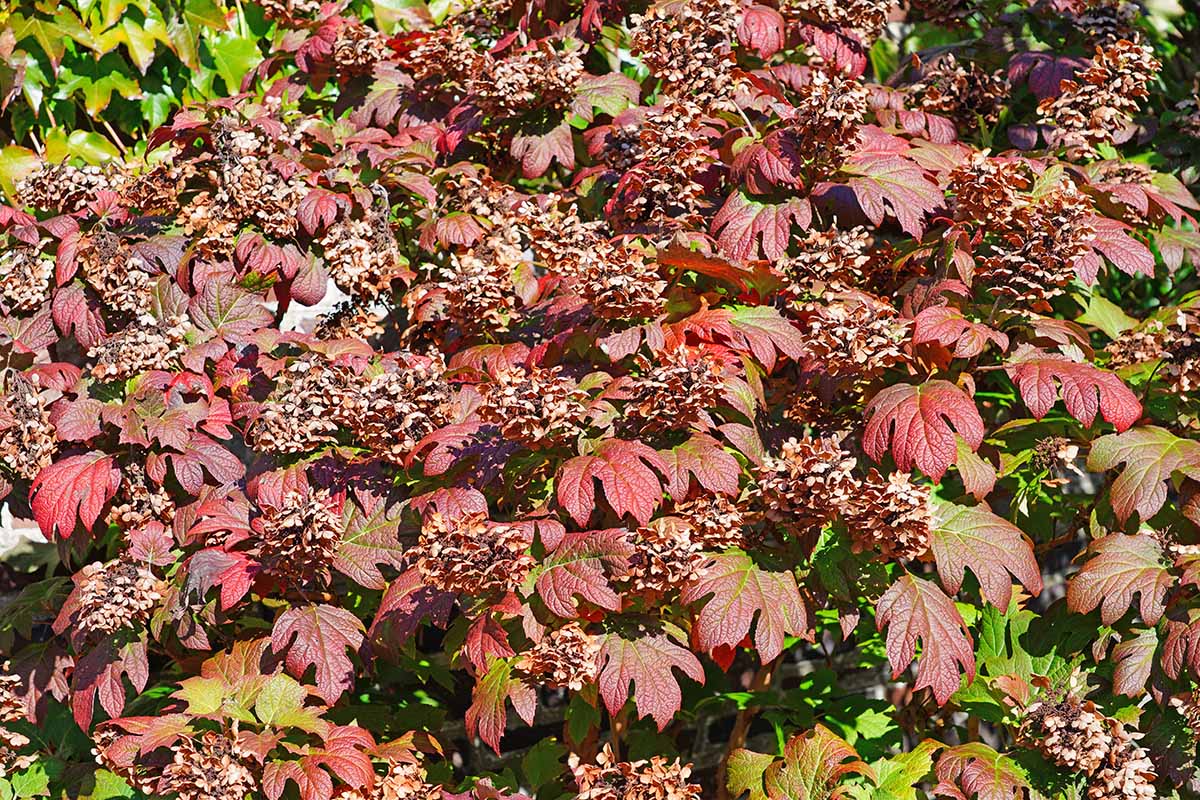
The pointed, conical shape of oakleaf hydrangea flowers contrasts with most other hydrangea blooms, which tend to rock a more rounded form.
Additionally, oakleaf hydrangea flowers don’t change color due to soil pH changes like other hydrangeas do.
After pollination by insects, the flowers give way to small inconspicuous fruit capsules, which persist on the plant throughout the dormant season. Afterwards, they open to release their seeds.
As the plants mature, the bark begins to peel, which creates exceptional winter interest once the leaves have fallen.
The way that the exfoliating bark peels away to expose the brown to reddish-orange colored stem tissue underneath may remind you a bit of a paperbark maple.
A Note of Caution
The flowers, leaves, and bark of oakleaf hydrangeas contain hydrangin, a mildly toxic cyanogenic glycoside.
Do not ingest any part of this plant, as it may cause nausea, vomiting, and other symptoms.
Cultivation and History
Believe it or not, Native American Cherokees used oakleaf hydrangeas for medicinal purposes.
Scrapings of the bark were used to make a poultice to treat burns, a tea made from the leaves was used to induce vomiting, and a tea was created from the roots to treat kidney stones and other urinary diseases.

Herbal lore passed down through the generations in the mountains of western North Carolina further suggest a remembered use of the oakleaf hydrangea to “bust up stones.”
First discovered by the American botanist John Bartram, the oakleaf hydrangea was later described and illustrated by his son William, who published the findings from his exploration of the southern British colonies in his 1791 book, “Bartram’s Travels.”
William described oakleaf hydrangea as a new species, and he named it with the unique, unusual leaves that he saw in mind. “Quercus” denotes oaks, and “folia” is the Latin word for leaves.
H. quercifolia is the state wildflower of Alabama, and can be found growing naturally throughout the state.

In the early-to-mid-20th century, breeders first began producing cultivars from the species plant.
‘Snow Queen’ and ‘Pee Wee’ were created early in the 1900s, and were used later as parent plants in a breeding program that began in 1996 at the US National Arboretum’s work site in McMinnville, Tennessee.
According to Agricultural Research Service geneticist Dr. Sandra Reed, the goal of the program was to create compact cultivars for use in residential gardens.
As a result, newer semi-dwarf cultivars such as ‘Ruby Slippers’ and ‘Munchkin’ have since become popular favorites in many areas.
Oakleaf Hydrangea Propagation
Ready to grow some oakleaf hydrangea? You’ve got plenty of options for starting out – you can sow seeds, take cuttings, utilize layering, or simply transplant an acquired specimen.
From Seed
The oakleaf hydrangea is easily propagated from seed, and should germinate in less than two weeks after planting. Having said that, propagating plants isn’t just about germination.
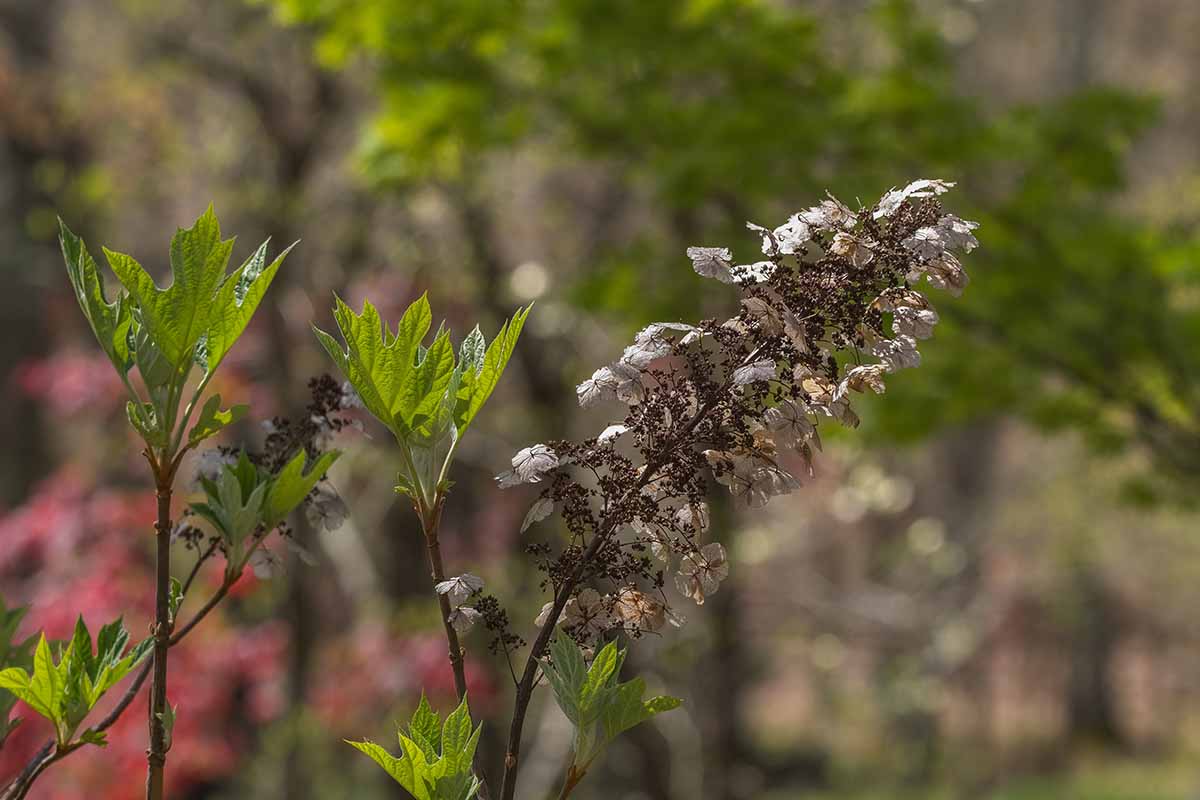
Oakleaf cultivars and hybrids produce viable seed, but their seeds will not produce exact clones of the parent plant like a cutting would.
As such, seeds are not readily available to purchase. If you still wish to give seed sowing a shot, it’s best to collect dried seed heads from existing plants in late fall or early winter.
Fill a six-cell seed-starting tray with a tried and true seed starting medium, such as a 50:50 mix of sphagnum peat moss and perlite.
CowPots are a nice, biodegradable option that makes transplanting easy. These are available as six-cell trays from Arbico Organics.
Seeds may be sown indoors about two to four weeks before the last frost date for your area.
Sow three to five seeds per cell, just below the surface of the potting medium, and place them in an area where they will receive indirect light indoors.
Seeds may also be sown outdoors after the last frost date in your area.
Sowing directly into a prepared bed consisting of well drained, organically rich soil may be slightly less effective than starting seeds indoors, but you may still have some luck with scattering the seeds by hand, raking them lightly into the soil, and then watering them in.
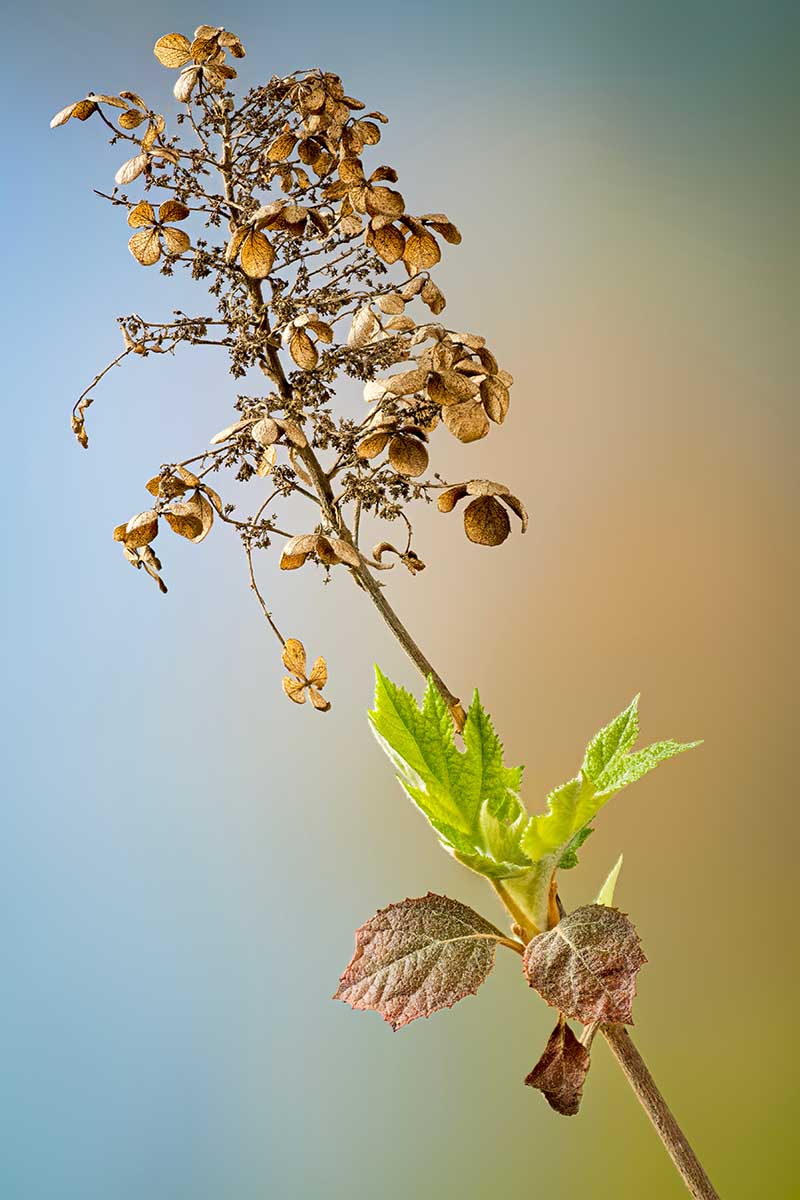
Continue to keep the soil moist. When seedlings grow their second set of leaves, they should be thinned to one seedling per cell.
If you hate this part, you could also give sowing just one seed per cell a shot, with no thinning required.
Indoor seedlings must be hardened off before transplanting in spring. To do so, leave them outdoors in partial shade for 30 to 60 minutes before bringing them back inside.
Each following day, add an additional half to a full hour of exposure time until they can spend a full day outside.
You can expect seedlings to take about seven months to one year to graduate from cell packs into two-gallon containers – make sure to repot as needed.
Plants in two-gallon containers are usually ready for transplanting into the ground by early to mid-fall of the planting year or early spring of the following year. For the latter, bring them back inside for the winter.
Read more about collecting and planting hydrangea seeds here.
From Cuttings
The oakleaf hydrangea can be difficult to propagate from cuttings, but not impossible. The method is similar to what you might do with other hydrangea types.
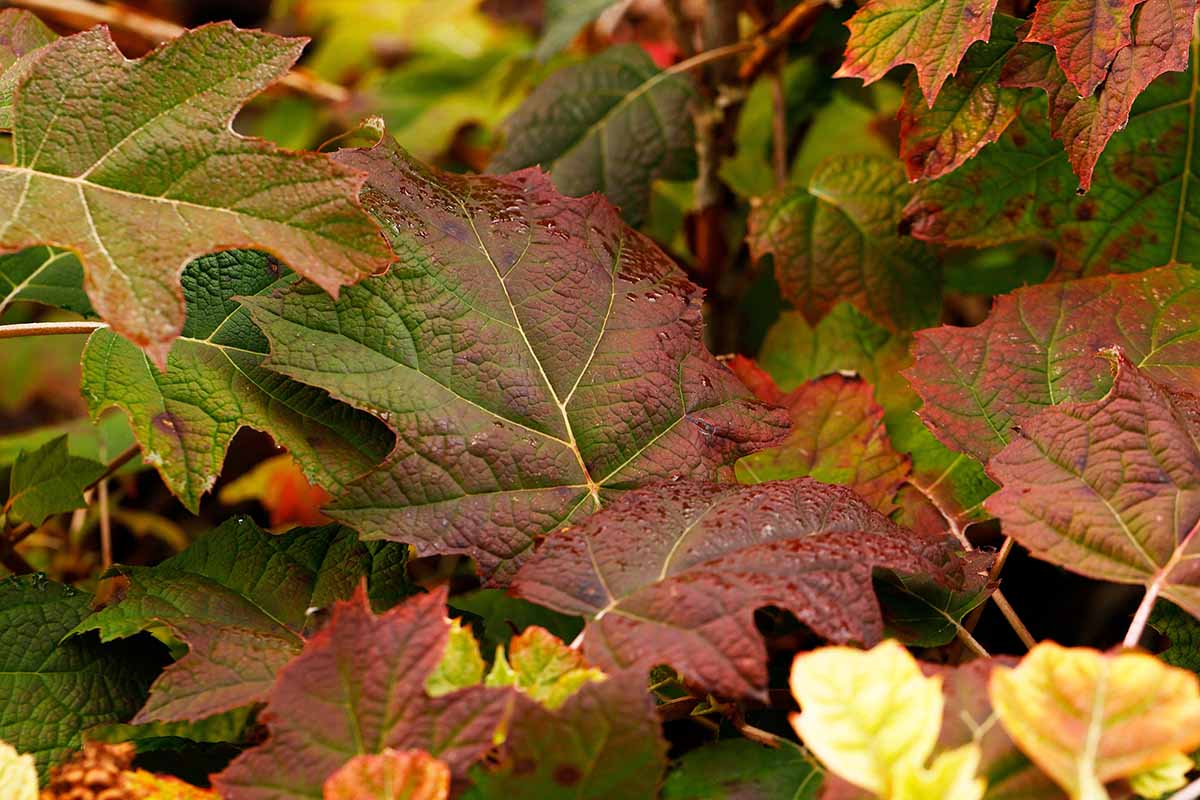
To ensure the best chance of rooting, the cuttings should be taken from late spring to early summer, which is the primary growth period for this species.
Cuttings taken later than this generally have a very low rate of root growth.
Take four- to six-inch cuttings with a sharp and sterile blade, defoliate their bottom halves, and dip their cut ends into a rooting hormone such as this IBA powder from Bonide that’s available via Arbico Organics.
Bonide Bontone II Rooting Powder
Transfer each cutting into a four- to six-inch container that’s filled with a 50:50 mix of peat moss and perlite.
Moisten the media, and provide the cuttings with indirect light. Keep the media moist. Rooting should have taken place by about the six- to eight-week mark.
Repot as needed, and your cuttings should be ready to harden off and transplant in early to mid-fall the following spring.
Learn more about how to grow hydrangeas from cuttings in our guide.
Via Layering
For a more hassle-free and hands-off approach, these shrubs are easily propagated using a technique called ground layering. Ideally, you do this in spring or early summer.
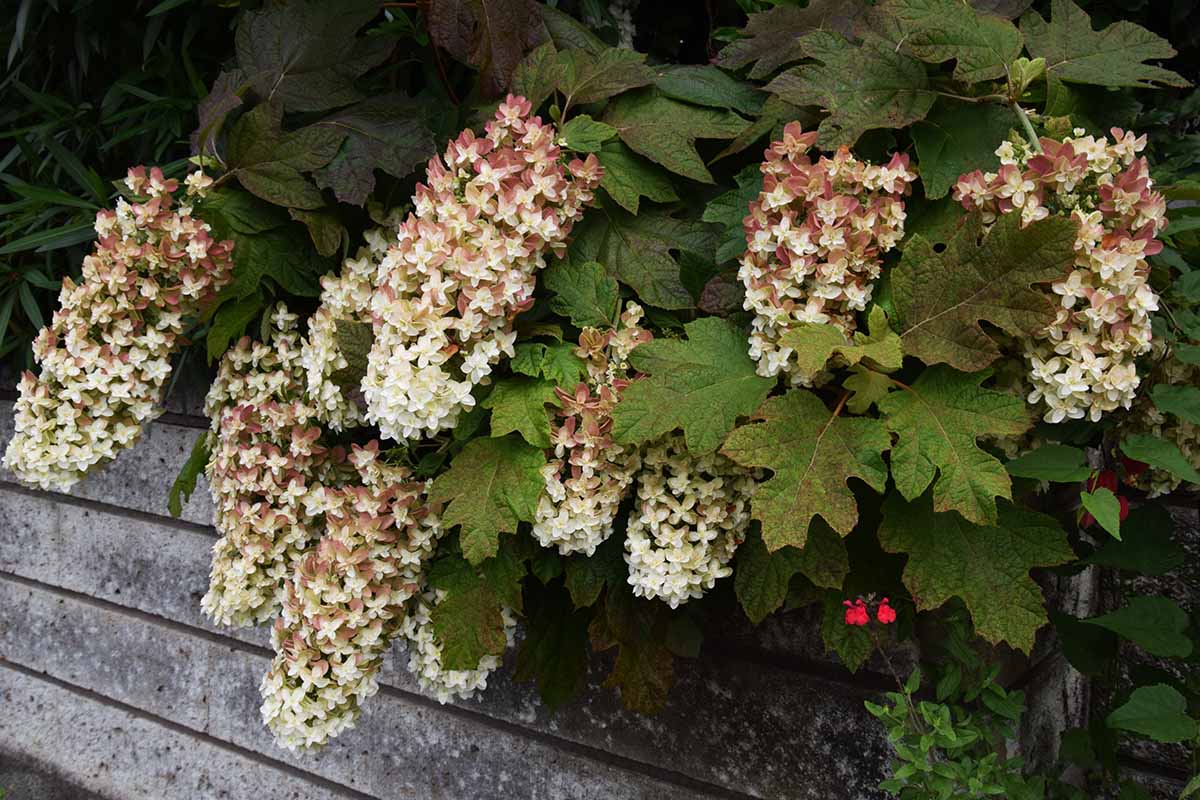
Because the branches are often low-growing, you can easily place the lower branches in contact with the soil and bury a portion to encourage root formation.
Make sure to remove the leaves of the buried portion, and make a small notch in the branch to promote rooting.
You may need to secure it with a horticultural staple or place a weight on part of the branch to ensure its continuous contact with the soil.
Save for keeping the soil around the buried branch moist, allow the area to remain undisturbed throughout the following six- to eight-week rooting period.
Then, the new clone can be cut from the “mother” plant with pruners, and transplanted to your selected location.
From Seedlings/Transplanting
In early spring or early to mid-fall, select partially shaded planting sites of fertile, well-draining soil with a pH of 6.0 to 7.5.
Space your sites about as far away as you expect your oakleaf hydrangea to spread at maturity.
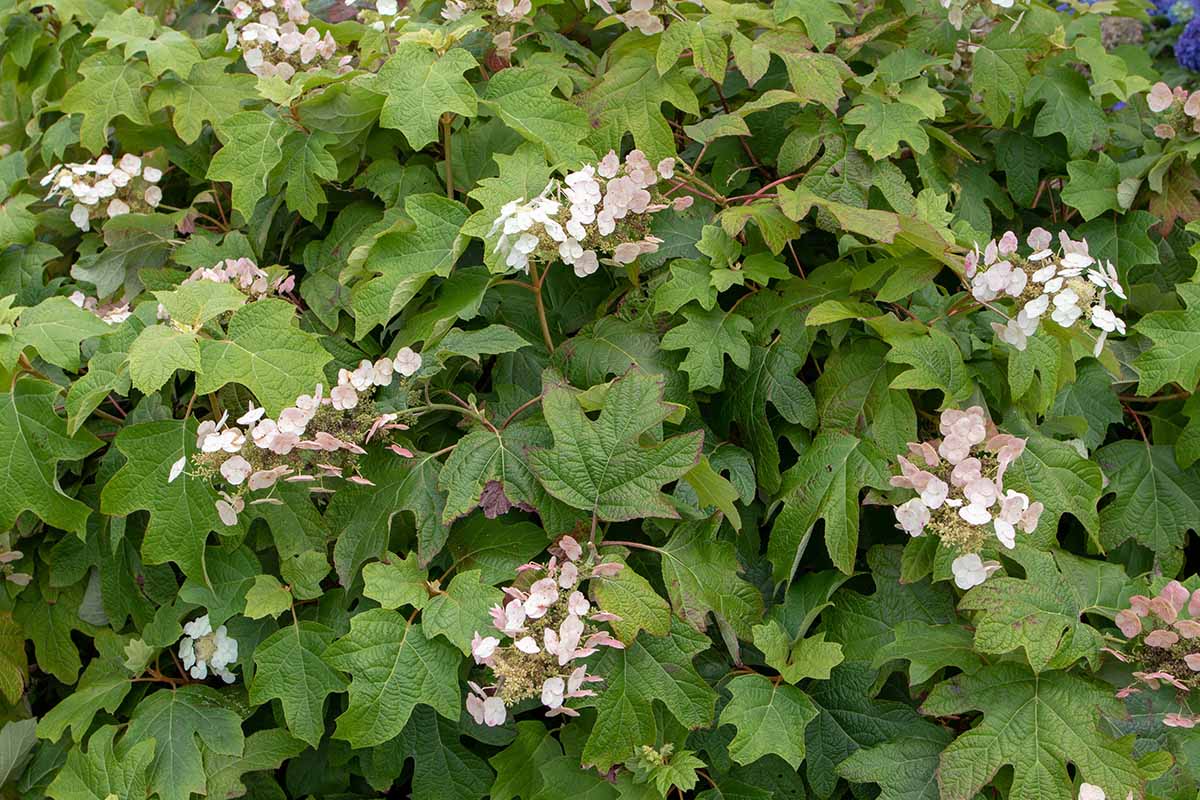
For each site, dig a hole that’s as deep as your transplant’s root system, and just a bit wider.
Remove the transplants from their containers, lower them into the holes, then backfill said holes with the dug-out soil.
Feel free to add an organic material such as compost or well-rotted manure to the dug-out soil beforehand for some added fertility.
Water in the transplants, and keep their surrounding soils moist for a year or so until they become more established.
How to Grow Oakleaf Hydrangeas
Ready to cultivate your young oakleaf hydrangeas as they grow into glorious maturity, and beyond? Then read on.
Climate and Exposure Needs
Do you have a garden in USDA Zones 5 to 9 with a spot that receives morning sun and afternoon shade? If so, you may have the perfect spot for growing an oakleaf hydrangea.
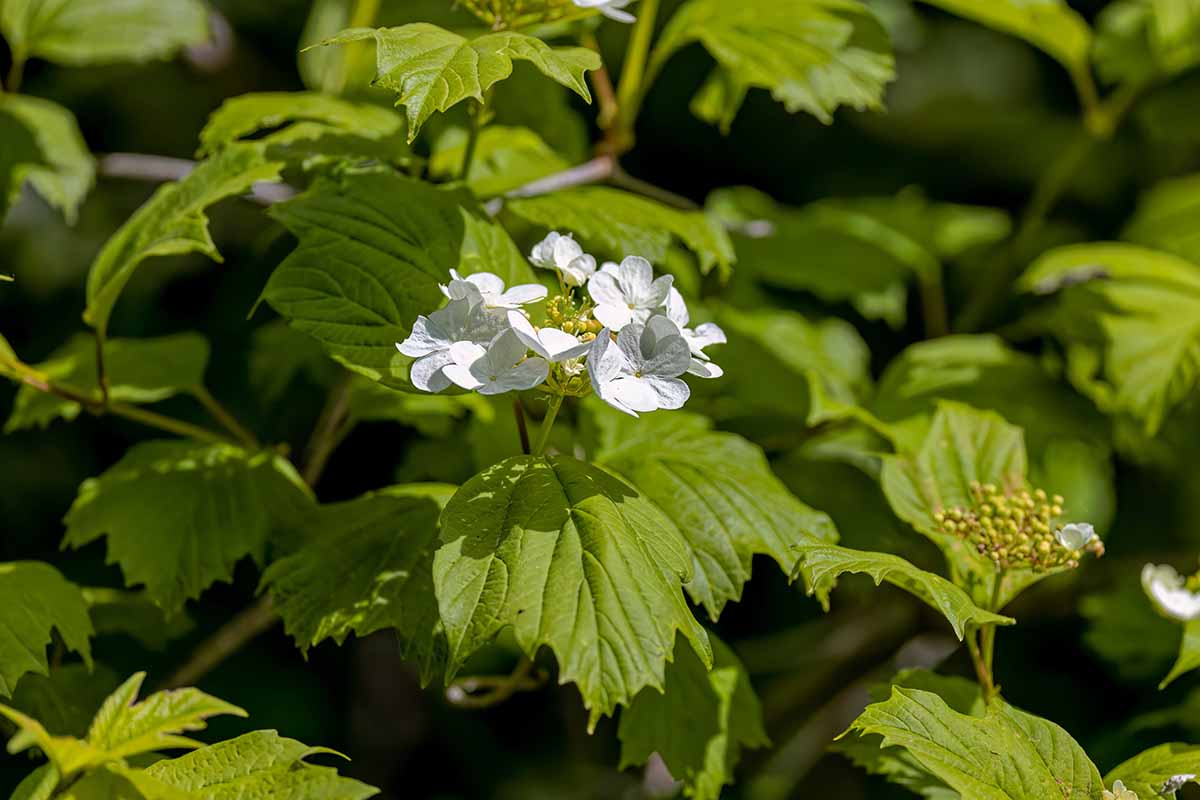
Because these amazing beauties can bloom in full shade – unlike other types of hydrangeas that need at least three hours of sun per day to bloom well – the shadiest spot in your garden can be enough for flowering. In Zones 5 to 6, full sun is tolerable, while you should stick with more shade in Zones 7 to 9.
Soil Needs
Other than some fertility, drainage, and a pH range of 6.0 to 7.5, there aren’t really any special soil requirements for these plants.
For cultivating the rich and organic soil that H. quercifolia loves, working an inch or two of organic matter into the root zone each spring is very helpful.
Water and Fertilizer Needs
Once your oakleaf hydrangeas are established, they should receive water whenever the top few inches of soil dry out.
If you stick a finger deep in the soil and don’t feel moisture, then you should make with the irrigation.
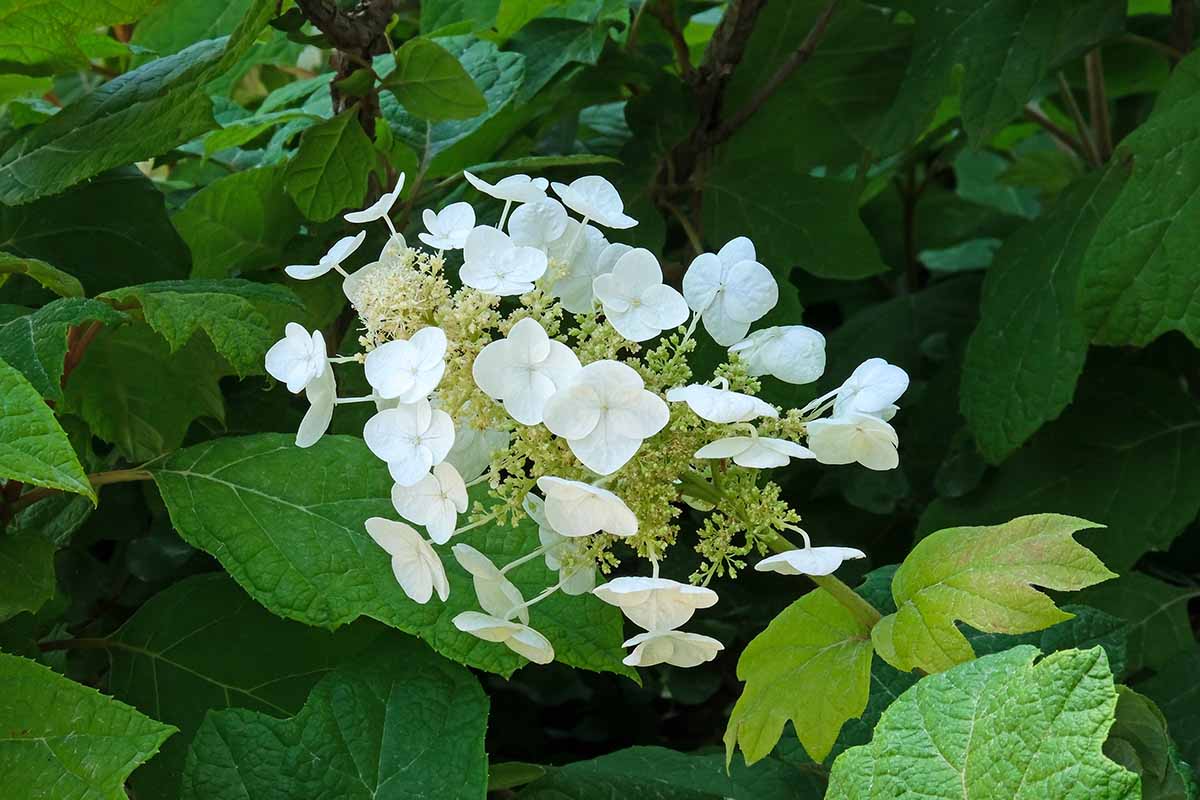
They are very tolerant of moist areas, and can be placed in locations many other types of plants would find too wet.
However, they do not like continuously sitting in standing water for long periods, so don’t go too crazy with the watering.
On the other end of the moisture spectrum, oakleaf hydrangeas will tolerate drier conditions than many other hydrangeas do, so don’t stress out too much if you forget to water one day, or even for a few weeks.
But if the leaves look wilted or droopy at all times – not just in extreme summer heat or direct sun, but beyond the hottest point in the day as well – then your oakleaf may be thirsty.
It’s best to fertilize once every month from May to July, while the shrubs are actively blooming.
Fertilize just around the “drip line,” or the perimeter of the leaf canopy. Don’t place fertilizer too close to the stem, or it can burn the plant.

Espoma Plant-Tone all-purpose fertilizer is an organic, granular, slow-release product with a 5-3-3 NPK ratio that’s suitable for use on a variety of plants in the garden.
Growing Tips
- Oakleaf hydrangeas will bloom with very little sun, unlike other hydrangeas.
- Make sure to provide well-draining soil.
- These plants love water, but mature specimens are also drought tolerant.
Pruning and Maintenance
Do you want a plant that needs very little maintenance, and looks even better when you don’t prune it?
Then look no further, because these super low-maintenance shrubs need very little pruning.
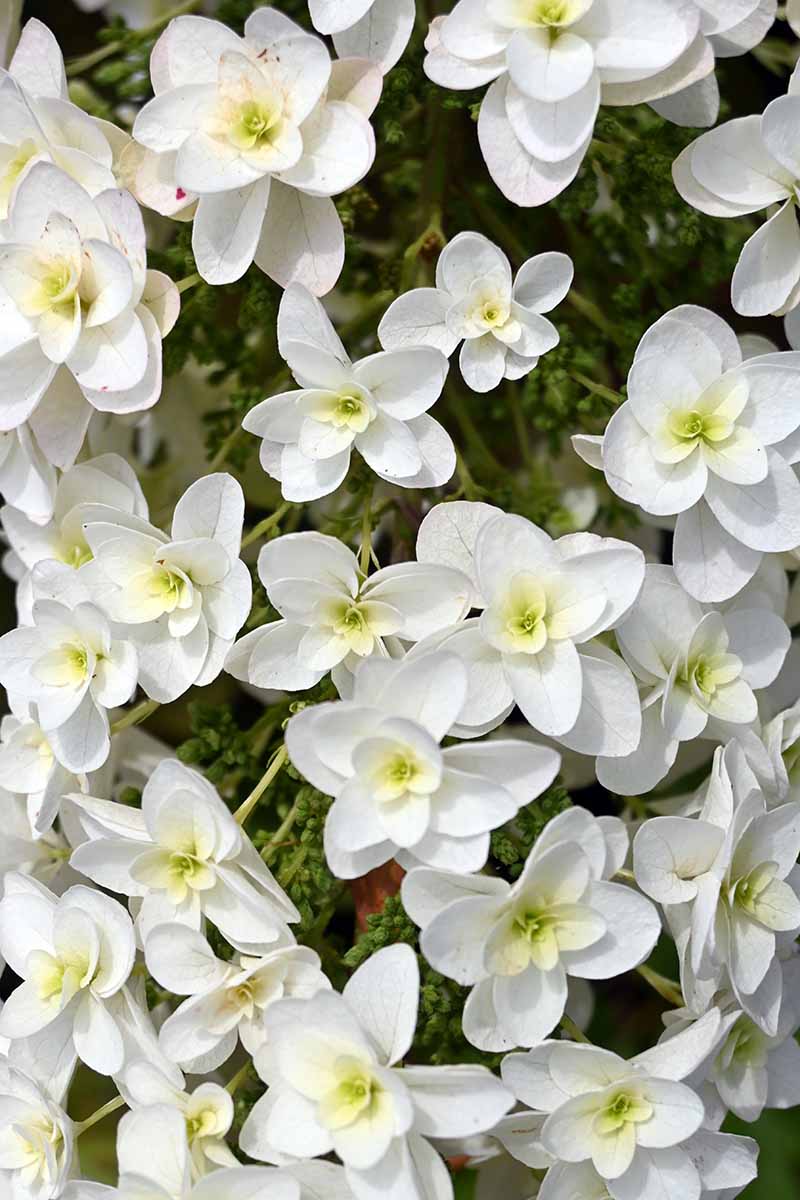
In early spring before the flush of new growth, feel free to prune back your shrubs if you need to keep them contained.
Make your cuts just above a node to encourage growth from those buds, and remove no more than a third of the shrub’s total aboveground mass in one go.
Any dead, damaged, or diseased tissues can be pruned whenever.
Deadheading old blooms by cutting just below the flowers in the fall after blooming ends, when the flower heads are drying out or fully dried, can improve the overall appearance of the plant.
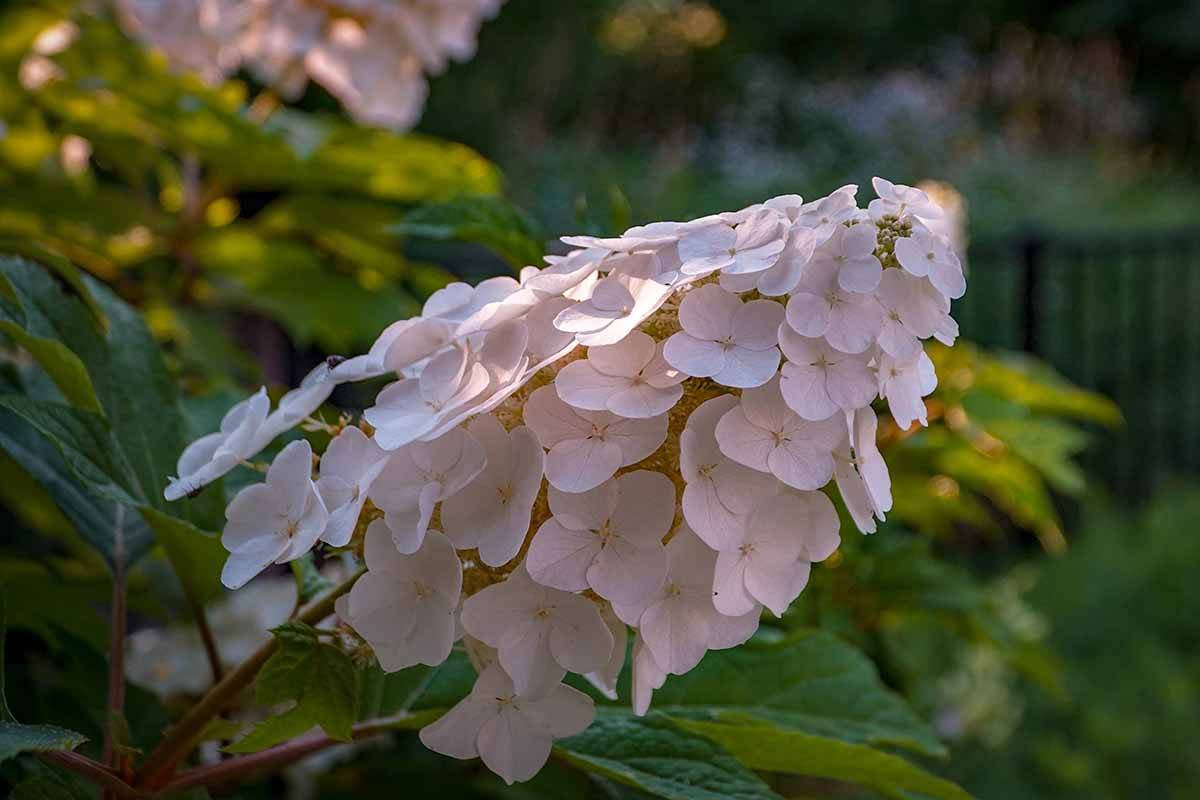
Mulch can be applied in summer, to help retain moisture.
Try adding a couple inches of fallen fall leaves or coarse pine bark mulch every year or two to prevent moisture loss and give the landscape a more polished look.
Take care to leave about two inches of unmulched space around the perimeter of the main trunk or stem to prevent rot.
Oakleaf Hydrangea Cultivars to Select
In addition to the standard species – which can be purchased in one-gallon containers from Home Depot – cultivars are available in a range of bloom colors, mature plant sizes, and growth habits.
Let’s take a look at a few of the top picks.
Alice
If you’re in the market for a big ol’ oakleaf hydrangea cultivar, ‘Alice’ can reach a tremendous verticality of 15 feet tall, making it more like a small tree than a shrub.
Its 12-inch white to pinkish-red panicle blooms are pretty honkin’ in size, too. It’s also super pretty when the sunlight streams through its orange, red, and yellow leaves in fall.
‘Alice’ makes a beautiful specimen planting for creating a focal point in the garden.
One can be used alone in the center of a garden bed, surrounded by other shade-loving shrubs such as Illicium and azaleas.
Just make sure you have enough space available for this one to grow into.
‘Alice’ is available in #3 containers from Nature Hills Nursery.
Pee Wee
Hoping to find a variety that’s a bit on the smaller side?
‘Pee Wee’ is a densely branched, mounded, and compact oakleaf which typically reaches heights and spreads of two to three feet, although it’s capable of growing a bit larger.
Compared to other oakleaf varieties, this cultivar is well-known for its very small flowers and leaves – the latter of which hold a gorgeous burgundy hue from fall well into winter – and its broadly pyramidal form works beautifully when placed at the front of a mixed border bed.
This cultivar is available for purchase from Nature Hills Nursery.
Snowflake
Need something bigger than the lil’ ‘Pee Wee’ but smaller than the giant ‘Alice’ variety?
‘Snowflake’ is a mid-sized beauty that reaches heights and spreads of about seven to eight feet.

It flaunts heavy, drooping, and graceful clusters of white flowers that age to a charming soft pink.
This cultivar can be used in mixed border beds and mass plantings to deliver maximum impact in the landscape.
Plant three to five of these about five feet apart or so, then fill in around the shrubs with perennials like hostas, heuchera, and other shade-loving perennials.
Managing Pests and Disease
Thankfully, the oakleaf hydrangea is significantly less susceptible to common health issues than other hydrangeas. Even so, they may still fall prey to certain pests and pathogens.
Here are the main culprits to keep an eye out for:
Herbivores
Deer are a major problem for these plants, so heads up. “Bambi” fans, you’ll have to put aside your affection and see these cervids as the enemy for a tick.
Deer absolutely love to eat the leaves, often to the point of total foliar destruction. If given the chance, they’ll eat every single leaf off a plant overnight.
But you can dissuade them by using products that contain garlic, trying out our tips for keeping deer out of the garden, or installing a deer fence.
If you don’t have or want to build a fence, plant them in an area where the animals might not be as eager to stop and snack, such as a shady high-traffic area close to the back deck or porch.
Deer are rarely brave enough to venture that close to the house, as long as it’s a place that you visit regularly.
Insects
As potential vectors of various diseases, insects should be managed with the utmost prejudice. Let’s go over some potential nuisances.
Aphids
As translucent and soft-bodied as they are annoying, aphids are a common foe of the gardener.
With their piercing-sucking mouthparts, they take up vital plant juices with the vigor of a sleep-deprived Gen Z’er slurping down their overpriced iced coffee.
As you can probably guess, this doesn’t leave the plant better off.
Additionally, these pests excrete honeydew as they feed, which isn’t as sweet as it sounds.
Often collecting on plant tissues, honeydew can promote the development of black sooty mold, which comes with a host of secondary health problems.
Aphids can be physically knocked off the plant with strong sprays of water, as well as suffocated with sprays of horticultural oil.
Monterey offers organic horticultural oil in various volumes of ready-to-spray bottles and concentrates available from Arbico Organics.
Consult our guide to battling aphids for more information.
Japanese Beetles
These shiny green and bronze pests are another notorious garden pest.
After the accidental introduction of Popillia japonica to the States, they’ve kept real busy with eating, mating, and being totally irritating.
The main symptom of an infestation is chewed-upon leaves, sometimes to the point of being skeletonized. But they’re quick to feed on flowers and fruits, too.
When you first notice these pests, you can handpick them and knock them into a bucket of soapy water, or spray them with insecticidal soaps.
Mornings and evenings are the best times to strike, as that’s when the beetles are at their most sluggish.
Find 12- and 32-ounce bottles of ready-to-spray insecticidal soap from Bonide at Arbico Organics.
Read more about controlling Japanese beetles here.
Spider Mites
Spider mites are itty-bitty arachnids that can be tough to spot with the naked eye. Chances are, you’ll notice the webs they weave before you actually spot the pests.
Similarly to aphids, spider mites extract vital plant fluids from leaves, which can weaken the foliage and the plant as a whole.
Strong sprays of water serve as an effective form of control, along with applications of horticultural oil or insecticidal soaps.
Learn more about detecting and controlling spider mite infestations in our guide.
Disease
In general, H. quercifolia is pretty resilient in the fact of most diseases, but there are some you should definitely keep an eye out for.
For a general refresher, feel free to consult our guide to identifying and treating hydrangea diseases.
Bacterial Leaf Spot
Caused by Xanthomonas campestris bacteria, this disease results in dark, reddish-purple leaf spots that can merge into large patches in time.
Whether in spot or patch form, these symptoms take up valuable photosynthetic real estate, which negatively affects growth and development.
This disease spreads via splashing water, so it’s important to avoid overhead watering and apply water directly to the root zone instead.
Additionally, refrain from planting specimens too close together, as that can promote bacterial spread.
Leaves heavily afflicted with bacterial spots should be removed and destroyed.
Powdery Mildew
Powdery mildew’s flagship symptom is a white powder that develops on the surface of leaves, which can stunt growth and leave the foliage looking unaesthetic and kinda gross.
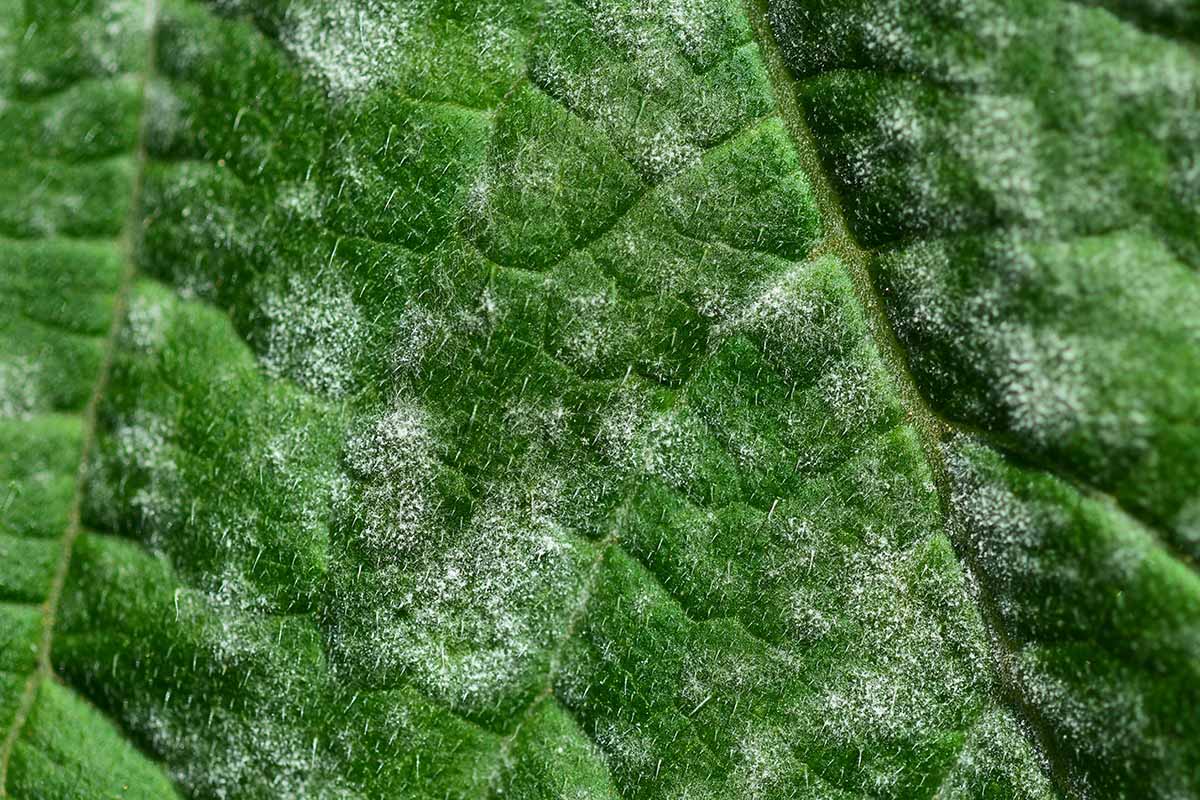
The causal fungus Erysiphe polygoni is likely to spread in humid and wet conditions, so avoid overhead watering and adequately space out plants.
Rake up and dispose of fallen leaves and branches, too. When promptly applied at the first sign of disease, fungicides can help to control it.
Read more about homemade and organic remedies for powdery mildew in our guide.
Root Rot
When plant roots receive too much water – or rather, not enough oxygen – they can quickly become necrotic, which can cause big-time issues with the aboveground shoots as well.
It’s super important to not overwater your oakleaf hydrangea while also providing enough drainage. If one or both of those ingredients is missing, then you’ll be left with a soggy, mushy root system.
If you suspect root rot, then you can dig up and cut away the rotted roots, along with a proportionate amount of shoot tissue.
If the majority of the roots are rotted, then the plant’s fate isn’t too bright – too-far-gone specimens should be pitched.
Best Uses of Oakleaf Hydrangea
Whether planted as single specimens, en masse, or in a mixed border, these lovely shrubs can be utilized in a variety of ways throughout the landscape.
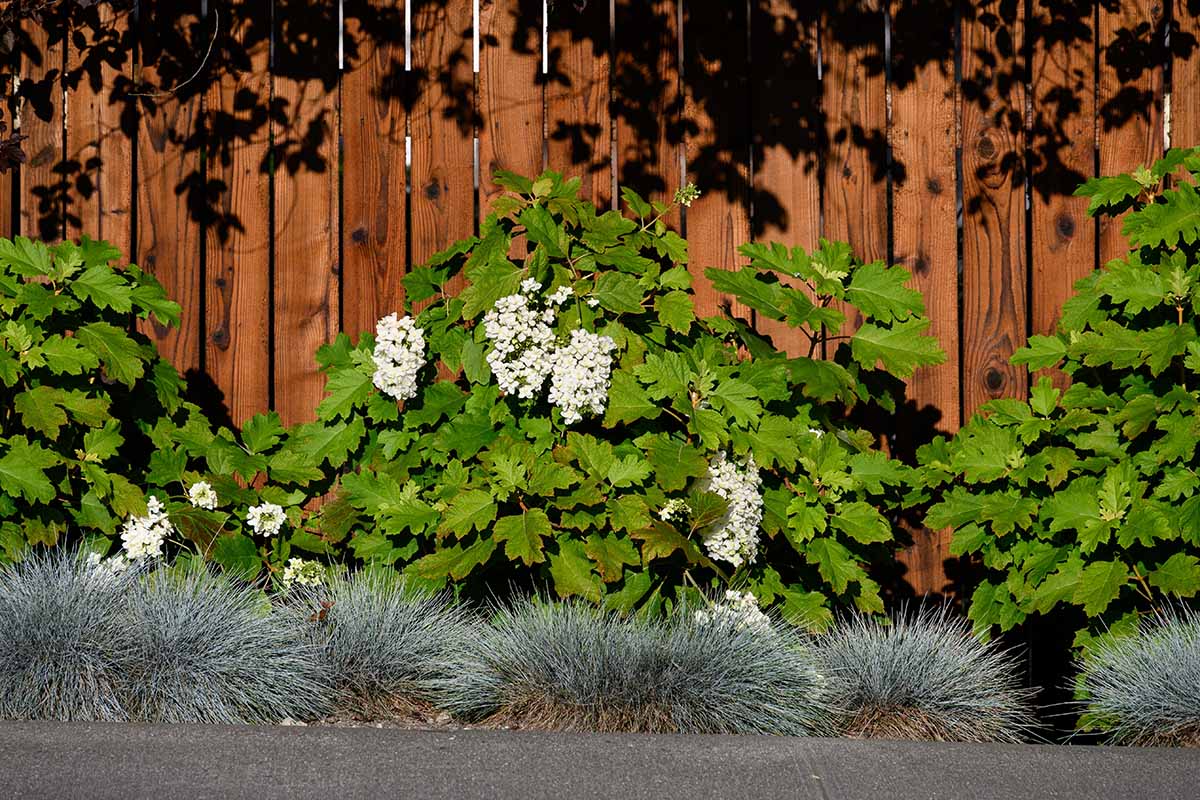
A single large plant can make a big impact. Choose a larger cultivar like ‘Alice’ for a spectacular display of blooms, or plant several to create an even larger focal point!
Mid-size cultivars such as ‘Snowflake’ make for super foundation plants in a mixed border bed.
Try mixing oakleaf hydrangeas with other shade-loving perennials for a stunning and spectacular display!
The blooms may be used to create bold and breathtaking floral arrangements, whether cut fresh or dried. These long-lasting reminders of summer’s splendor can really brighten indoor spaces.
Quick Reference Growing Guide
| Plant Type: | Flowering deciduous woody shrub | Flower / Foliage Color: | White, purple-pink/green (red, orange, yellow, purple in fall) |
| Native to: | Southeastern United States | Maintenance: | Low |
| Hardiness (USDA Zone): | 5-9 | Tolerance: | Full shade, full sun, moderate drought |
| Bloom Time: | Summer | Soil Type: | Fertile, organically rich |
| Exposure: | Partial shade | Soil pH: | 6.0-7.5 |
| Spacing: | Width of mature spread | Soil Drainage: | Well-draining |
| Planting Depth: | Just below soil surface (seed), depth of root system (transplants) | Attracts: | Bees, butterflies, other insect pollinators, songbirds |
| Height: | 4-10 feet | Uses: | Mass plantings, mixed borders, shade gardens, specimen plantings, woodland gardens |
| Spread: | 4-10 feet | Order: | Cornales |
| Growth Rate: | Moderate | Family: | Hydrangeaceae |
| Water Needs: | Moderate | Genus: | Hydrangea |
| Common Pests and Diseases: | Aphids, Japanese beetles, spider mites; bacterial leaf spot, powdery mildew, root rot | Species: | Quercifolia |
Don’t Snub This Shrub
As William Bartram wrote, H. quercifolia is truly “a very singular and beautiful shrub.”
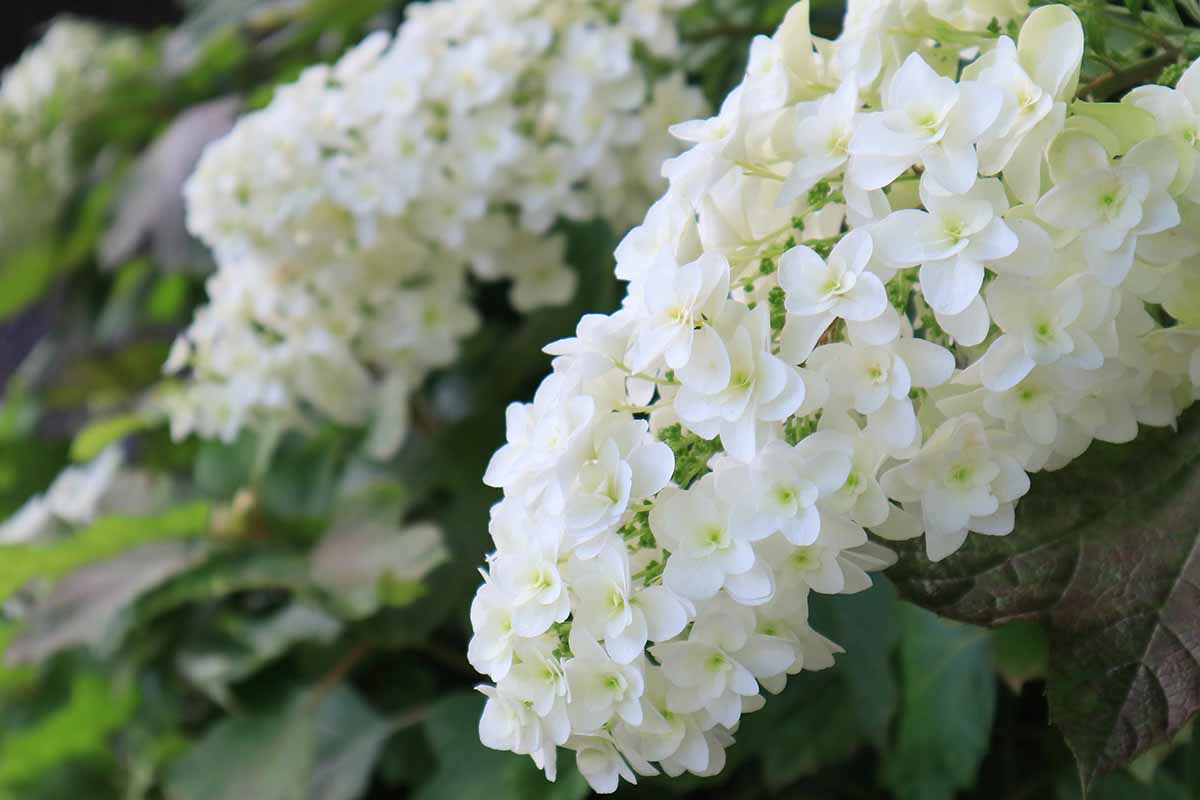
This attractive and distinctive woody wonder is a fantastic selection if you’re looking for a low-maintenance shrub that blooms profusely in the shade.
It provides four-season aesthetics with an intriguing display of beautifully shaped leaves, charming blossoms, spectacular fall color, and attractive bare bark in winter.
Here’s the gist, folks: make the unique, stunning, and versatile oakleaf hydrangea a part of your garden today, and you’re sure to be satisfied!
We welcome your comments and any questions you may have. Please reach out below.
Do you want even more hydrangea know-how? Take a look at these guides next:

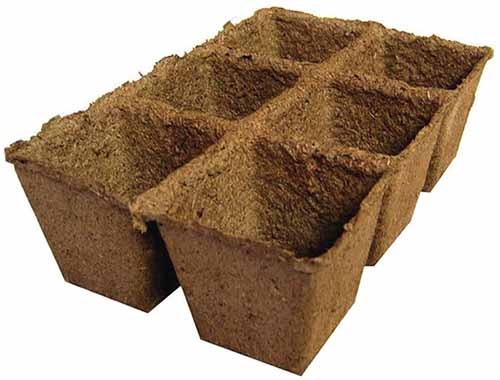
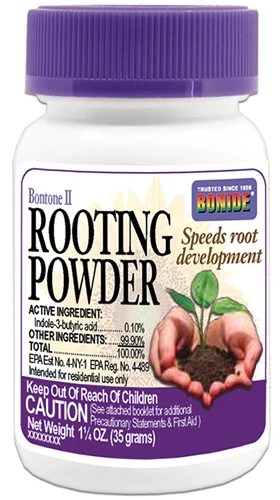
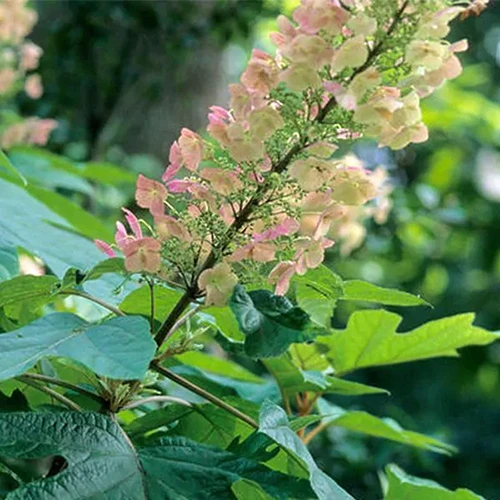

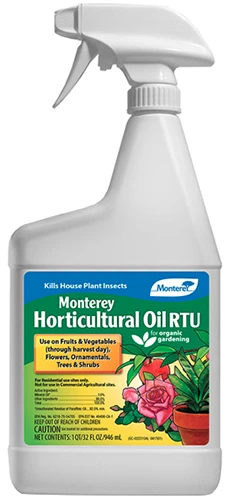

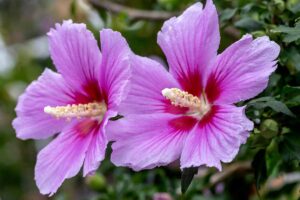
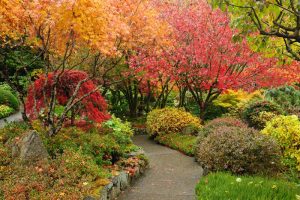
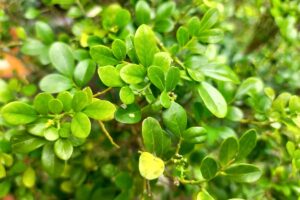
Thank you for the article that is so thorough and full of gorgeous photos…well done.
Question—I have about 4 ruby slipper and love them. However, one plant is lush with foliage but produces only a few. Panicked, can you help?
Hello Karen Zapczynski! I know that panicky feeling when a favorite variety won’t bloom, but am hoping this is a one-time occurrence. First, a clarification. You did mean that just one of the four plants isn’t blooming? If so, that’s more puzzling since I’m assuming you treat them all four in a similar fashion. If that’s not the case, please let me know! But if it is just this one oakleaf hydrangea that won’t bloom much, is it planted in a different area than the others? Common causes of not blooming include the buds freezing in the winter, and gardeners… Read more »
One of my favorite flowers, Hydrangeas! I have several Nico Blue and 2 oakleaf, not sure which variety. From white to reddish to brown blooms. The oakleaf grew fast. I bought 1 gallon containers at Lowes, this is the 4th year. They are now 4 1/2 feet tall and wide.
Hello Jackie! Thanks for sharing.It’s so nice to hear about lush, thriving oakleaf hydrangeas. Enjoy!